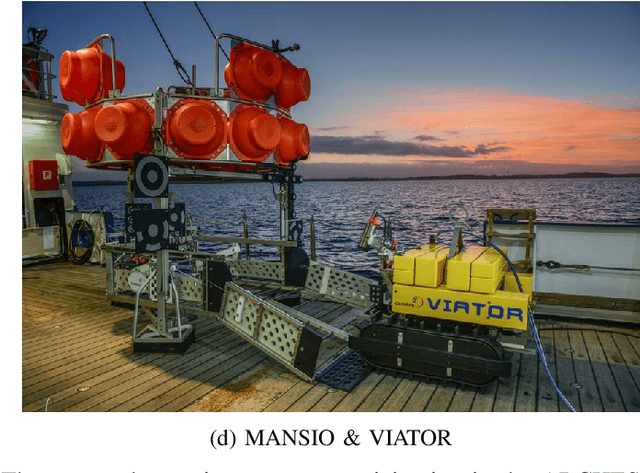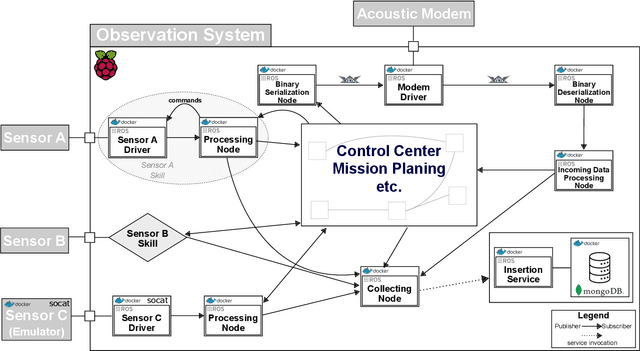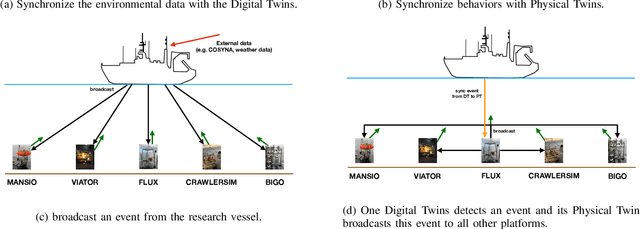Wilhelm Hasselbring
Modeling Polyp Activity of Paragorgia arborea Using Supervised Learning
Sep 26, 2022



Abstract:While the distribution patterns of cold-water corals, such as Paragorgia arborea, have received increasing attention in recent studies, little is known about their in situ activity patterns. In this paper, we examine polyp activity in P. arborea using machine learning techniques to analyze high-resolution time series data and photographs obtained from an autonomous lander cluster deployed in the Stjernsund, Norway. An interactive illustration of the models derived in this paper is provided online as supplementary material. We find that the best predictor of the degree of extension of the coral polyps is current direction with a lag of three hours. Other variables that are not directly associated with water currents, such as temperature and salinity, offer much less information concerning polyp activity. Interestingly, the degree of polyp extension can be predicted more reliably by sampling the laminar flows in the water column above the measurement site than by sampling the more turbulent flows in the direct vicinity of the corals. Our results show that the activity patterns of the P. arborea polyps are governed by the strong tidal current regime of the Stjernsund. It appears that P. arborea does not react to shorter changes in the ambient current regime but instead adjusts its behavior in accordance with the large-scale pattern of the tidal cycle itself in order to optimize nutrient uptake.
* 25 pages
JavaBERT: Training a transformer-based model for the Java programming language
Oct 20, 2021



Abstract:Code quality is and will be a crucial factor while developing new software code, requiring appropriate tools to ensure functional and reliable code. Machine learning techniques are still rarely used for software engineering tools, missing out the potential benefits of its application. Natural language processing has shown the potential to process text data regarding a variety of tasks. We argue, that such models can also show similar benefits for software code processing. In this paper, we investigate how models used for natural language processing can be trained upon software code. We introduce a data retrieval pipeline for software code and train a model upon Java software code. The resulting model, JavaBERT, shows a high accuracy on the masked language modeling task showing its potential for software engineering tools.
Developing an Underwater Network of Ocean Observation Systems with Digital Twin Prototypes -- A Field Report from the Baltic Sea
Mar 15, 2021



Abstract:During the research cruise AL547 with RV ALKOR (October 20-31, 2020), a collaborative underwater network of ocean observation systems was deployed in Boknis Eck (SW Baltic Sea, German exclusive economic zone (EEZ)) in the context of the project ARCHES (Autonomous Robotic Networks to Help Modern Societies). This network was realized via a Digital Twin Prototype approach. During that period different scenarios were executed to demonstrate the feasibility of Digital Twins in an extreme environment such as underwater. One of the scenarios showed the collaboration of stage IV Digital Twins with their physical counterparts on the seafloor. This way, we address the research question, whether Digital Twins represent a feasible approach to operate mobile ad hoc networks for ocean and coastal observation.
Automated identification of metamorphic test scenarios for an ocean-modeling application
Sep 03, 2020Abstract:Metamorphic testing seeks to validate software in the absence of test oracles. Our application domain is ocean modeling, where test oracles often do not exist, but where symmetries of the simulated physical systems are known. In this short paper we present work in progress for automated generation of metamorphic test scenarios using machine learning. Metamorphic testing may be expressed as f(g(X))=h(f(X)) with f being the application under test, with input data X, and with the metamorphic relation (g, h). Automatically generated metamorphic relations can be used for constructing regression tests, and for comparing different versions of the same software application. Here, we restrict to h being the identity map. Then, the task of constructing tests means finding different g which we tackle using machine learning algorithms. These algorithms typically minimize a cost function. As one possible g is already known to be the identity map, for finding a second possible g, we construct the cost function to minimize for g being a metamorphic relation and to penalize for g being the identity map. After identifying the first metamorphic relation, the procedure is repeated with a cost function rewarding g that are orthogonal to previously found metamorphic relations. For experimental evaluation, two implementations of an ocean-modeling application will be subjected to the proposed method with the objective of presenting the use of metamorphic relations to test the implementations of the applications.
 Add to Chrome
Add to Chrome Add to Firefox
Add to Firefox Add to Edge
Add to Edge